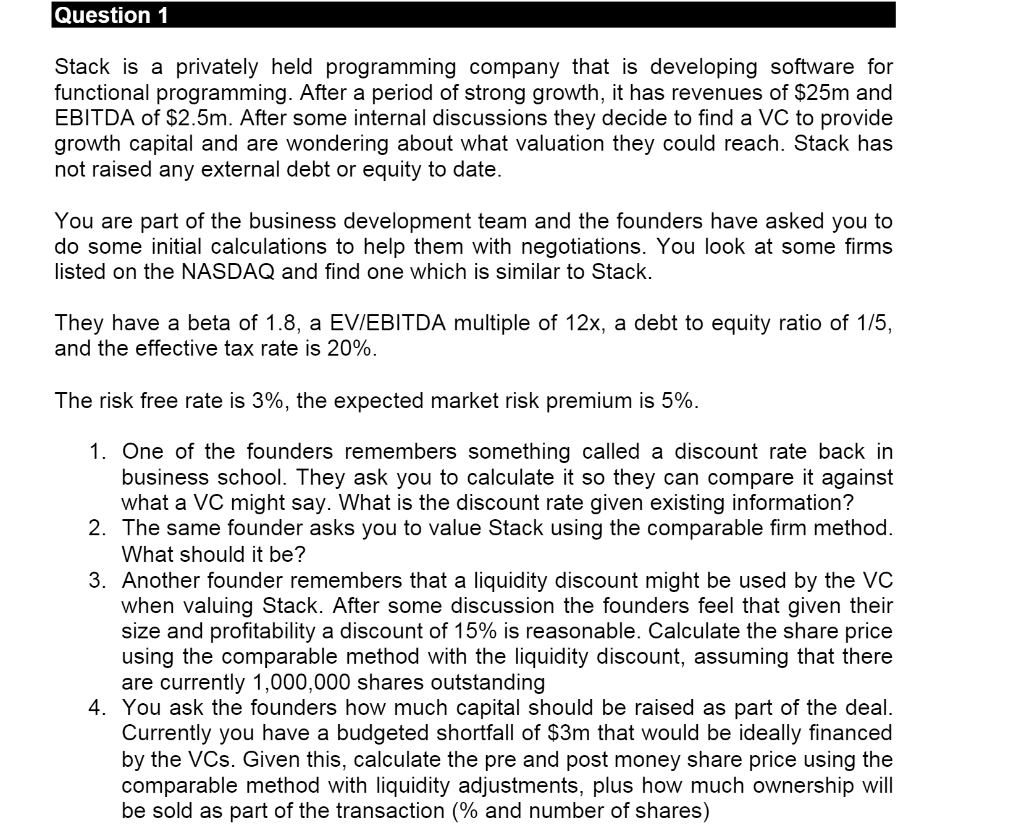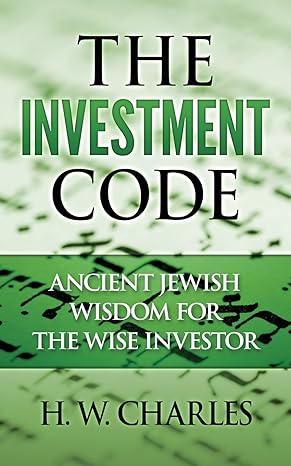
Question 1 Stack is a privately held programming company that is developing software for functional programming. After a period of strong growth, it has revenues of $25m and EBITDA of $2.5m. After some internal discussions they decide to find a VC to provide growth capital and are wondering about what valuation they could reach. Stack has not raised any external debt or equity to date. You are part of the business development team and the founders have asked you to do some initial calculations to help them with negotiations. You look at some firms listed on the NASDAQ and find one which is similar to Stack. They have a beta of 1.8, a EV/EBITDA multiple of 12x, a debt to equity ratio of 1/5, and the effective tax rate is 20%. The risk free rate is 3%, the expected market risk premium is 5%. 1. One of the founders remembers something called a discount rate back in business school. They ask you to calculate it so they can compare it against what a VC might say. What is the discount rate given existing information? 2. The same founder asks you to value Stack using the comparable firm method. What should it be? 3. Another founder remembers that a liquidity discount might be used by the VC when valuing Stack. After some discussion the founders feel that given their size and profitability a discount of 15% is reasonable. Calculate the share price using the comparable method with the liquidity discount, assuming that there are currently 1,000,000 shares outstanding 4. You ask the founders how much capital should be raised as part of the deal. Currently you have a budgeted shortfall of $3m that would be ideally financed by the VCS. Given this, calculate the pre and post money share price using the comparable method with liquidity adjustments, plus how much ownership will be sold as part of the transaction (% and number of shares) Question 1 Stack is a privately held programming company that is developing software for functional programming. After a period of strong growth, it has revenues of $25m and EBITDA of $2.5m. After some internal discussions they decide to find a VC to provide growth capital and are wondering about what valuation they could reach. Stack has not raised any external debt or equity to date. You are part of the business development team and the founders have asked you to do some initial calculations to help them with negotiations. You look at some firms listed on the NASDAQ and find one which is similar to Stack. They have a beta of 1.8, a EV/EBITDA multiple of 12x, a debt to equity ratio of 1/5, and the effective tax rate is 20%. The risk free rate is 3%, the expected market risk premium is 5%. 1. One of the founders remembers something called a discount rate back in business school. They ask you to calculate it so they can compare it against what a VC might say. What is the discount rate given existing information? 2. The same founder asks you to value Stack using the comparable firm method. What should it be? 3. Another founder remembers that a liquidity discount might be used by the VC when valuing Stack. After some discussion the founders feel that given their size and profitability a discount of 15% is reasonable. Calculate the share price using the comparable method with the liquidity discount, assuming that there are currently 1,000,000 shares outstanding 4. You ask the founders how much capital should be raised as part of the deal. Currently you have a budgeted shortfall of $3m that would be ideally financed by the VCS. Given this, calculate the pre and post money share price using the comparable method with liquidity adjustments, plus how much ownership will be sold as part of the transaction (% and number of shares)







